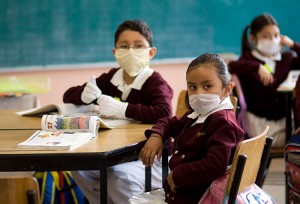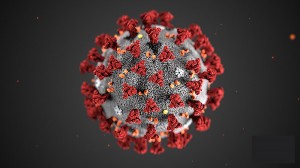COVID-19: School’s Out
Friday, April 3rd, 2020April 3, 2020
As the world continues to struggle with the ongoing COVID-19 pandemic, most schools and universities around the globe have closed in an effort to help stop the spread of the deadly disease. In the United States—where there are more COVID-19 cases (more than 245,000) than in any other country—school closures began in March 2020. Schools began to close in March or earlier in other countries as well, as COVID-19 quickly spread from where it was first detected, in China, in December 2019. COVID-19 is a pneumonia-like disease caused by a coronavirus, a type of virus that also causes the common cold and other diseases of the upper respiratory system. To date, COVID-19 has killed more than 54,000 people among more than 1 million confirmed cases.

On March 22, 2020, a school in Carlsbad, California, optimistically awaited the return of students in mid-April. Credit: © Shutterstock
According to the United Nations Educational, Scientific and Cultural Organization (UNESCO), 188 countries have closed schools locally or nationwide, leaving more than 1.5 billion people—nearly 90 percent of the world’s student population—out of classrooms. The closures have also affected more than 60 million teachers, many of whom continue to instruct through online classes or other forms of distance and remote learning.

In 2009, a contagious disease known as the swine flue forced school closings in several countries. In this photograph, children wear protective masks as they return to classes in Mexico City on May 11, 2009. The Mexican government had closed schools in April to help stop the spread of the disease. Credit: © Jorge Dan, Reuters
Public schools are closed throughout the United States, but many states are hoping to bring students back to classrooms by the end of April. All timelines, however, depend on the containment or continued spread of COVID-19. Such states as Alabama, Oklahoma, and Virginia have cancelled classes until the start of the fall 2020 semester, and many other states may soon have to follow suit. As a result of the class disruptions, most standardized testing will not take place this spring, and the April ACT and May SAT college entrance examinations were both cancelled.

This illustration of Coronavirus Disease 2019 (COVID-19) shows the spikes on the outer surface of the virus that appear as a corona, giving the virus its name. Credit: Centers for Disease Control and Prevention (CDC)
School closures are part of social distancing, also known as physical distancing, an effort to slow or stop the spread of a contagious disease by limiting contact between people. Social distancing is most effective against illnesses that can be transmitted by coughing or sneezing, direct or indirect physical contact, or through the air. Typical social distancing measures call for the closing of such public places as schools, restaurants, museums, and many offices and stores. They may also call for people to maintain a distance of around 6 feet (2 meters) between them in public places.



